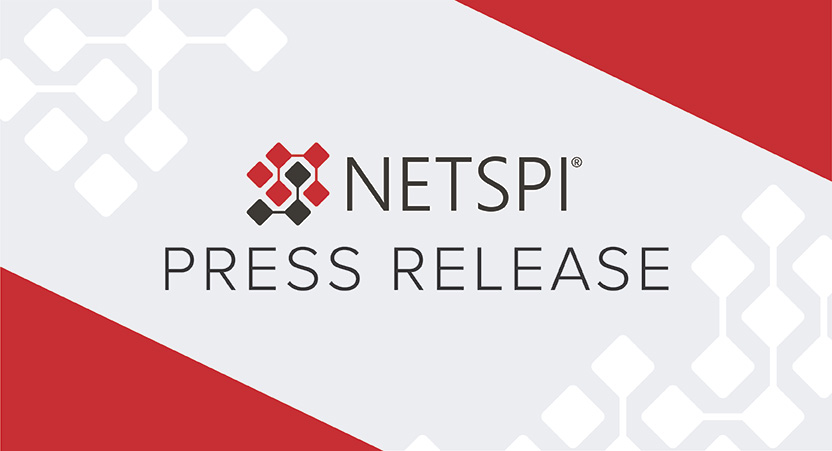VMblog.com: 6 Tech Leaders Share their Outlook on the Great Resignation and how to React
On November 11, 2021, NetSPI COO Charles Horton was featured in an article written by David Marshallfor VMblog.com. Read the full article below or online here.
Seventy-two percent of tech/IT workers are considering quitting their job in the next year. This shortage is leaving some business leaders uncertain and anxious. Below, you will find commentary from 6 leaders from various technology companies such as Raytheon, Ease, and Fuze, among others. They offer insights on trends they are seeing at their own companies as well as advice to navigate or mitigate future issues.
++
Sandra Slager, COO, Mindedge Learning
“Work location flexibility is the biggest paradigm shift of the pandemic for technical professionals and technology companies alike. Companies who have made this shift have likely built the communications and systems infrastructure to cast a nationwide net in their search for top talent. Similarly, talented tech workers-engineers, cybersecurity security experts, programmers, and the like- can extend their job hunt to more cities. To keep top talent, work location flexibility sits as the foundation. Companies must also be prepared to layer on competitive wages and bonuses, but also a corporate culture that genuinely cares about staff well-being which manifests in any number of benefits such as generous vacation time, paid family leave, and even tuition reimbursement.”
Jon Check, Senior director of cyber protection solutions, Raytheon Intelligence & Space
“Given the current climate, we should not be surprised by the high resignation rates we’re seeing in the technology sector. The gap within the cybersecurity industry is especially clear; there’s a shortage in the workforce, which means that many people are being stretched thin and expected to wear multiple hats- and maybe more than they can handle. This leads to feelings of burnout and dissatisfaction. With a market that is now favoring employees, people are going to look for new opportunities that offer more benefits and a better work-life balance.
I coined the term Cyberlandia as the ideal workplace culture within cybersecurity teams, where operations are at the optimum state of cyber readiness, with happy team members who feel empowered to face whatever threats they encounter. However, we can only make employees happy if everyone’s thoughts are valued and voice is heard, only then will we truly start to deliver what they need to thrive. Technology leaders should be opening two-way communication lines so that employees feel comfortable voicing their opinion on what needs to shift: team structure, changes to work schedules, training opportunities – and the list could go on.
We also need to react to the great resignation by looking for talent where we have failed to in the past, to both close the talent gap and diversify the workforce. Women and minorities currently underrepresented in cybersecurity positions. To combat this, technology companies can offer tuition reimbursement, scholarships, and student loan repayment programs as a tangible way to make sure that individuals of all backgrounds can help us fill the technology shortage that will continue to grow unless we create a more welcoming, inclusive and flexible workplace culture.”
Stephen Cavey, Co-founder, Ground Labs
“The great resignation poses a significant challenge to many organizations, but in particular, to technology companies, especially IT and cybersecurity teams. These organizations are already challenged to stay abreast of the latest trends and threats, not to mention ensuring an organization’s defenses are maintained. Often, these expectations and pressures leave IT and security teams feeling overwhelmed.
We are seeing major digitization efforts happening across technology companies in tandem with the “Great Resignation.” Within most teams, there are manual tasks that can be completed more efficiently with innovations in automation and improved workflow. To help alleviate employee burnout, leaders should ask: Have I done everything in my power to make my employees’ work life better? Acknowledging the situation and taking steps to better understand and improve your team’s workload is a critical first step to holistically address potential burnout that may be happening. In addition to helping employees manage workload, tech leaders should check in with employees to confirm whether they feel they have enough training, mentorship and support to succeed.
With the pandemic still in motion, leaders must also take into consideration employees’ personal wellbeing. Do all employees work in a role where they need to be measured on the basis of a 9 to 5 workday? Could you evaluate them on their deliverables and the quality of their work – and openly offer flexibility and let them know it’s ok if they need to take time to care for themselves or someone else. In this new remote by default world, being proactive in looking out for your team is not only critical for their wellbeing but might just help reduce the likelihood of your team being impacted by the Great Resignation that is happening at present.”
Mari Kemp, SVP of HR, Ease
“The 2021 talent market is ten times more competitive than it was a year ago and we’ve seen bargaining power shift from employers to employees. employees are winning. This is the first time in decades we’ve seen employees have power over their employers and the results are astounding. Employees are demanding more from their employers in terms of benefits, work-life balance, and culture. Employers can no longer dictate that their staff return to the in-office setting, and those that do risk losing employees.
Furthermore, the Great Resignation has drastically changed the way companies handle recruitment, onboarding, retention, and off-boarding. Moving forward, recruitment efforts will become more reliant on internal networks and may increase referral bonuses, in addition to increased marketing and branding efforts. As for onboarding, retention, and off-boarding, companies will need to welcome employee engagement and stay close to their people emotionally instead of physically. By meeting with departments individually, conducting employee surveys, and utilizing available employee data, companies can understand why employees are staying or leaving. Additionally, employee data such as age and demographics can aid in retention as it provides a snapshot of how to adjust current healthcare and benefit options.
Wellness in the workplace will be a major issue for companies in 2022, a recent Microsoft study showed that the average American’s work week has gotten 10% longer during the pandemic. To combat burnout, companies need to encourage employees to create boundaries and a better work-life balance. Additionally, managers and department heads alike need to ensure that they are not rewarding employees that are failing to create these boundaries.”
Charles Horton, COO, NetSPI
“The Great Resignation we’re seeing across the country has underscored a growing trend spurred by the COVID-19 pandemic: employees will leave their company if it cannot effectively meet their needs or fit into their lifestyle. While many are turning to innovative technologies to drive growth and retain employees, this effort alone will not solve the problem at-hand. Talent is now a business’ main asset, and corporate leadership must invest in it accordingly.
First, invest in entry level employees. With the Great Resignation pulling talent to new companies and new career paths, it’s more important than ever for companies to build a strong pipeline of emerging talent that can grow within the company, and in turn, keep retention rates high. Since security is a complex and sometimes challenging field to break into, organizations should develop entry level training programs that lower the barriers to entry and set junior employees up for long term success within the company.
Second, organizations must adjust their cultural mindset. While the tech and cybersecurity industries have historically been individual sports, companies win as teams, and they must operate as so. Department heads should foster a culture that’s built on principles like performance, accountability, caring, communication, and collaboration. Once this team-based viewpoint is established, employees will take greater pride in their work, producing positive results for their teams, the company and themselves – ultimately driving positive retention rates across the organization.”
Brian Day, CEO, Fuze
“As the Great Resignation continues, employees are seeking opportunities that provide more flexibility. A recent survey showed that 75% of all workers believe flexible work should be a standard practice, not a benefit, and 67% would consider finding a new job for greater flexibility.
Technology companies should be thinking about how to transform into employee-first organizations in order to both attract and retain talent. At Fuze, I’m continuing to give my employees the choice to dictate their own schedules and encourage our global workforce to remain working from home if that’s what’s best for them. In addition, we are taking an intentional laggard approach to our office re-opening, and are slowly re-opening each regional office based on local guidance and vaccination rates. While the Great Resignation remains a challenge, business leaders must realize that when they establish work-from-home policies, employees’ preferences and feelings go hand-in-hand with that process. When employees’ priorities are taken into consideration, businesses can avoid the impacts of a second wave of the “Great Resignation” and maintain an overall happier and engaged workforce, while also driving better business results.”




